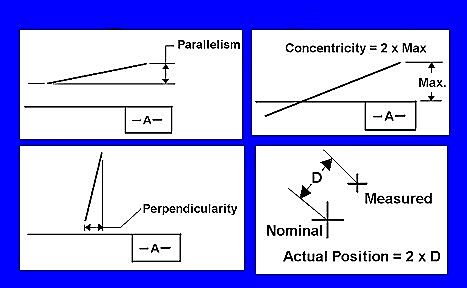GD&T Orientation Dimension Definitions
Orientation dimensions define the gap or interference created when you put two surfaces together. Measure requests a feature and a datum. The datum is considered infinite and the value of the orientation dimension is only over the length of the feature. It is important that you choose the larger or longer of the two features to be the datum. If you choose the larger of the two features as the feature, then you will get an extraordinarily high orientation dimension value.
Parallelism Dimension
When two parallel planes come together, they are supposed to mate flush. If they are not parallel, when they come together, a gap is created. Parallelism is the gap (difference between high and low point on the plane). Parallelism can be used with any plane or line reducible features.
Perpendicularity
Perpendicularity is intended to show the gap created when you mate two perpendicular features. Perpendicularity can be used with any plane or line reducible features.
Concentricity Dimension
This tells if a line reducible feature is on the same line as another line reducible feature. This is intended to see if a pin and a hole will mate without interference. If the pin is not concentric to a hole (i.e., the pin is angled too drastically) then the pin will interfere with the edges of the hole.

Keywords: GD&T, parallelism, perpendicularity, concentricity, orientation, Measure
